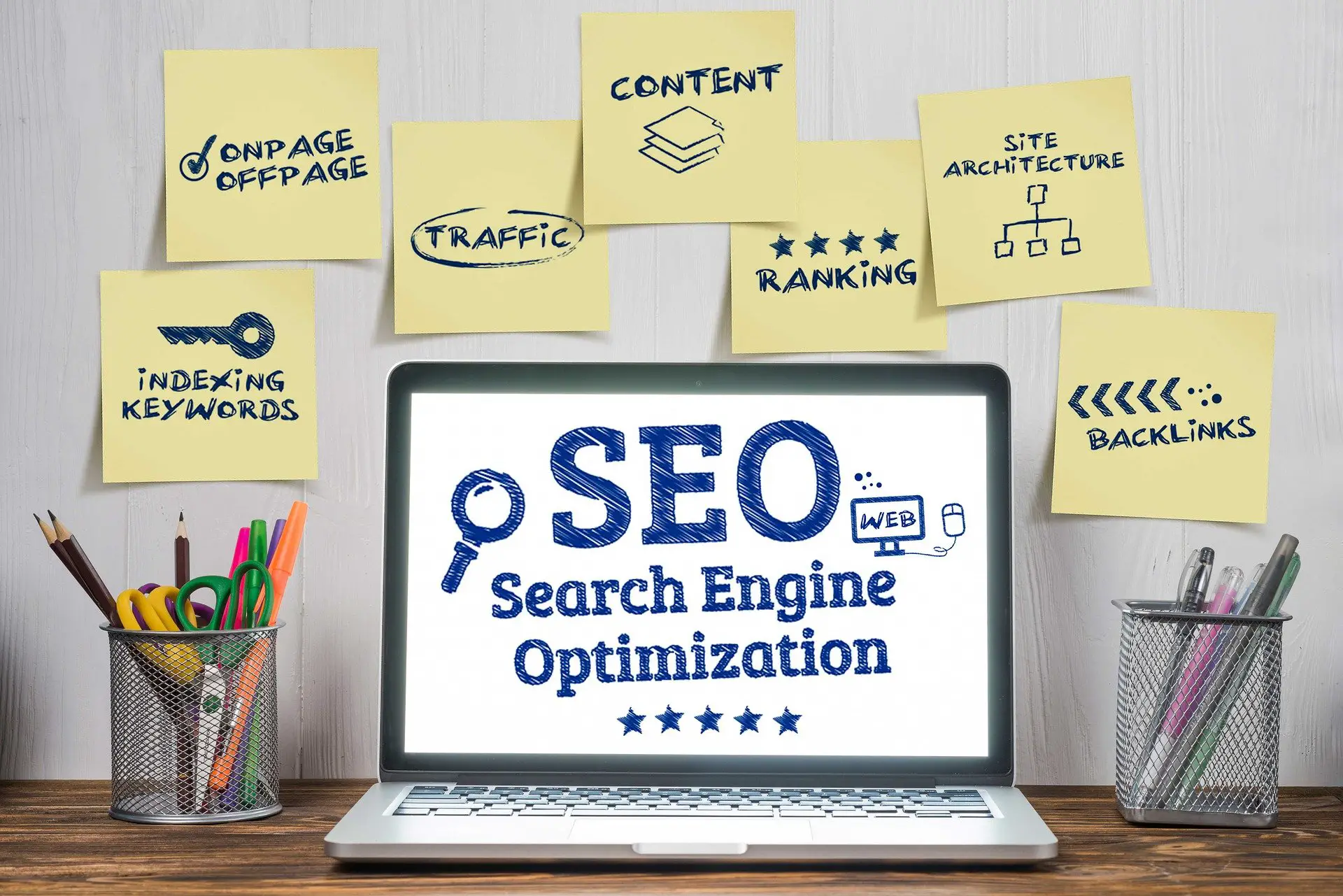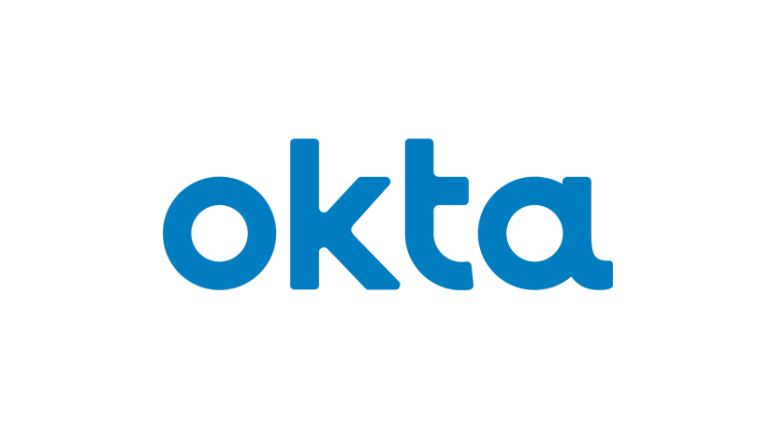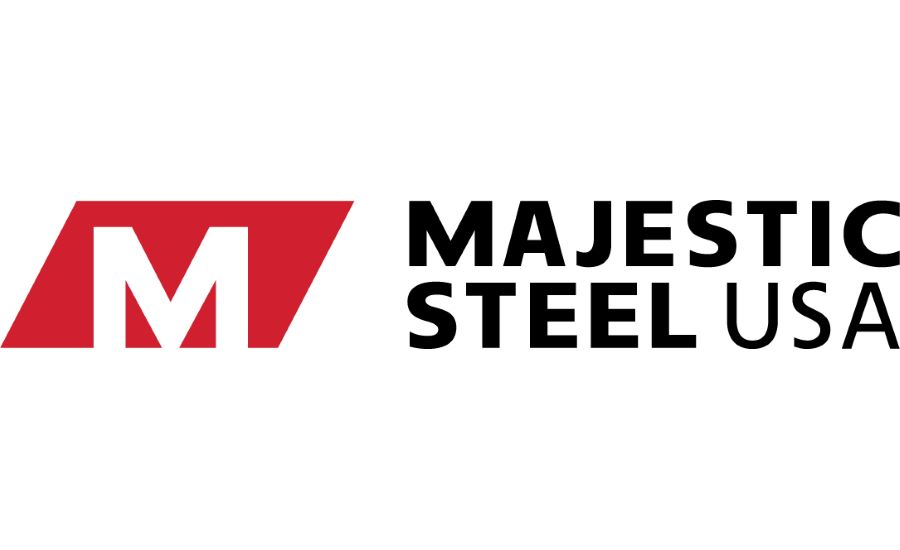
Search engine optimization is a core part of modern business-to-business marketing. While there are some slight differences for business-to-consumer companies, the fundamentals stay the same with B2B.
No matter what type of business you have, SEO boils down to one concept. It’s about identifying your target personas’ search habits, and then solving their problems through relevant content strategy, usually by writing blog posts (articles).
Any SEO strategy should focus on:
- Discovering what keywords your personas (target audience) are searching for
- Creating articles that targets those keywords and solves their problems (before asking them to buy anything)
- Convincing Google that your content is the most relevant, authoritative, and helpful; delivering on all of these is how Google stays in business.
That’s what SEO is all about regardless of industry, sector, or business type. Yet, while the principles stay the same, B2B SEO has some different considerations than B2C when put into practice.
Stick around to learn how B2B and B2C SEO strategies differ – and how to use B2B SEO to generate consistent leads.
Which Section Do You Want To Read First?
What is a B2B SEO Strategy?

B2B SEO is a form of digital marketing designed for business-to-business companies. It involves implementing techniques to rank higher on search engines like Google.
It’s a more specialized form of SEO than B2C (business to consumer). B2C SEO is generally more about broad exposure and reaching more individual consumers. It’s also focused on getting customers to make a purchase on the site and on the spot.
With B2B companies, your customers are decision-makers at other businesses.
Therefore, your strategy should target these key decision-makers instead of the general public.
You’ll want to look for low-volume keywords (think less popular because fewer people are searching for them) that business professionals search for online. These keywords are much different than the heavily-searched B2C keywords.
A typical B2C keyword will get searched way more often than a B2B keyword will.
In other words, B2B keywords are high-value, niche keywords. They’re usually highly specific words related to the industry you’re targeting. Here are some examples of B2B keywords:
- ‘Commercial HVAC services Green Bay’
- ‘Warehouse inventory management software’
- ‘Food and beverage procurement’
As you can see – these are detailed searches only a business professional would lookup. You’ll want to target decision-makers such as:
- Managers
- CFOs
- Purchasing Agents
- Founders
- Directors
- CEOs
- CMOs
Beyond tailoring your keywords to professionals, B2B SEO is less about sales conversions (and more about lead conversion). You see – these decision-makers aren’t ready to make a purchase decision right away. Just because they search for ‘warehouse inventory management software’ once doesn’t mean they’re ready to buy it.
That’s because B2B purchases are often significant, involve higher consideration, and need many people to sign off on them.
A manager may discover your software or a physical product through a Google search and like it. Yet, they’ll need to get the green light from their superiors and CEO, too.
For this reason, B2B SEO strategies are more about brand + relationship building. The idea is to create content that informs and solves problems. That way your brand becomes “trusted” in the minds of key decision-makers. That will increase your chances of making a sale when the time comes to take action and select a provider.
What about B2C SEO Strategy?

B2C SEO is different from B2B in a few ways. You’re targeting the general public (and usually 1 or 2 decision-makers) instead of business professionals. There is a broader appeal rather than going for low volume keywords.
That means going for those keywords that average many more searches a month.
Of course, the fundamentals are the same. You need to identify your buyer’s persona and learn their problems. From there, you create articles that solve those problems through what you sell.
The content that you publish needs to be informal and easy to read. You’re going for a broader audience here so aim for a readability score of 66 on Grammarly. That implies anyone with 8th-grade reading comprehension will understand it.
Social media marketing is one of the cornerstones of B2C SEO efforts.
If you’re selling trendy new sneakers, then you’ll want to have a presence on Instagram, TikTok, and Facebook. Also, you can have more fun with your content. You can come up with interactive posts like surveys, and humor is always welcome.
As you can imagine, social media isn’t the best platform to spend a ton of time on when it comes to B2B SEO. Instead, email marketing, blogging, and sales touches are far more effective.
5 Key Differences Between B2C & B2B SEO?

For the most part, there are more similarities than differences here. SEO is always SEO, and the basics are universal. Once again, they are:
- You have to discover what your target audience is searching for the most
- You need to create relevant content that satisfies them
- You have to convince Google that your content rises above the rest
Those three basics are the same for both B2B and B2C SEO. Not only that, but Google has no specific ranking factors unique to B2B. There’s no algorithm for B2B companies – only the algorithm Google uses for everything.
That means SEO best practices stay the same across both fields.
The differences lie in the tactics you need to take to find success. Here’s an in-depth look at the most significant differences between B2B and B2C SEO.
1. Multiple Decision Makers & Varied Search Intent
For a B2B SEO strategy to work, it needs to reach multiple decision-makers – not just one. That’s because your customer isn’t a single person or family; it’s a complex business. It’ll take the approval of more than one manager or member of the executive suite to purchase your offering.
That’s why you must optimize your landing pages to accommodate several audiences. Ideally, you want to answer the top questions from all your buyer personas. That includes managers, stakeholders, and practitioners of your prospects.
Here’s an example of what I mean:
- To appeal to stakeholders, you’ll want to answer high-level business questions. “How to scale a business in industry x?” is an example.
- For managers, you’ll need to cast a wide net to cover all their responsibilities. Examples include, “Which software is best for scheduling employees? How do I automate my email marketing campaigns? Which software will save me the most time?”
- You’ll also want to include answers to questions practitioners have. These will primarily be tactical questions such as, “How to increase conversion rates in situation x?”
It’s crucial to do your research to know who you need to appeal to at your target companies. Also, don’t panic if your list of buyer personas grows into double digits. Targeting as many as ten buyer personas for organic search in B2B SEO is common.
2. Lower Volume (Less Popular) Target Keywords, But Higher $ Value
Perhaps the most significant difference between B2B and B2C SEO is the type of keywords that you’ll use. B2C SEO generally uses high-volume keywords that can attract a lot of organic traffic with fewer pages.
Yet – the B2B space works differently. You’ll need to focus on low-volume keywords that have a higher value and create more pages (articles, product/service pages, etc.).
We’ve already gone over the reason – decision-makers search for highly specific terms. They’re trying to answer questions that will help them with their business.
It’ll also take more research to find these vital B2B keywords. Since they have a lower volume, they won’t be as easy to identify. Instead of targeting a keyword that gets a lot of traffic, your keyword may get only a few per month. But usually there is a higher payoff (larger ticket item or subscription that makes the effort worthwhile).
3. Converts Less Organic Traffic
Another difference is B2B SEO isn’t necessarily designed to convert first-time visitors into customers. With B2C companies, your primary goal is to convert as much organic traffic as possible (and nurture non-purchasers via a combo of retargeting and email marketing automation). That’s why you target high-volume keywords and go for a broad demographic.
Also, consumers don’t have to go through as many channels to make a decision. If they decide they like your sneakers (or whatever you’re selling), they may buy them right then and there.
But you should still optimize your B2B content for conversions (email leads instead of sales).
Going for the hard sell with B2B professionals won’t work. Even if they do like your product at first glance – they likely won’t have the authority to sign off on it.
The goal is to optimize your content for a long sales cycle. Get them to the site and nurture them through a combo of retargeting and email marketing automation. You’re there to make an impression on as many key decision-makers as you can. That way, when they are ready to make a purchase, your brand will be at the top of their minds.
4. Longer Sales Cycle = Need for More Email Nurturing
The B2C sales cycle tends to be a shorter one, especially since many of those purchases require lower consideration (lower price point). You entice customers with your products and services – and they decide to try you out. That’s about as complicated as it gets (with the exception being higher ticket items, of course).
You’re in it for the long haul with a B2B SEO strategy. It’ll likely take the key players at your prospect’s business a while to make a decision.
That’s why you need highly optimized content that answers a wide variety of specific questions.
Beyond that, you’ll need to undergo a lot of careful email nurturing where you send a series of emails to your sales leads. These can be automated emails but they need a relevant message, either.
You base each email on the behavior of each lead grouping. Your goal is to help guide them through the buying process. That means sending emails with relevant content articles and others that help your leads choose the best product or service for them.
You can think of each email in a nurture campaign as a call-to-action. It’s meant to motivate your target company to get their feet wet and move closer to trying out what you have to offer.
5. Brand is More Crucial = Need for More Content Showing in Search Results
The final key difference between B2C and B2B SEO is the need for brand-building. While it’s always beneficial to have a trusted and recognizable brand – it’s the most important for B2B.
Why’s that?
It has to do with the longer sales cycle and more targeted strategy. Remember, your customer is a business, representing many individuals.
You’ll need to appeal to these folks at each business. Since they’re not always ready to make a purchase right away, brand-building is your best weapon.
The idea is to have a lot of your content showing up in relevant search results. That ensures that professionals at each business will constantly see your brand.
“Oh yeah, I read an article from them explaining their software a while back – it seemed helpful; I’ll read more.”
You know you’re on the right track if you can get decision-makers uttering phrases like that.
Why is SEO important for B2B & Do Search Engines Treat it Differently?

SEO is important for B2B, just as it is for any type of business. You won’t get far in today’s age if you don’t pay any attention to search engines. A majority of customers are online – regardless of what type of business you have.
Google doesn’t treat B2B SEO any different than it does any type of SEO. There are no special algorithms or unique ranking factors for B2B pages.
All you need to do is tweak the unchanging fundamentals of SEO to fit the B2B space. You’ll still need to target keywords, build links, and create amazing content. The only difference is how you go about doing those things.
My B2B SEO Clients’ Success Benefits You
I have a lot of experience creating SEO strategies for B2B companies. That’s how I accrued the knowledge for writing this ultimate guide.
Thanks to years of experimentation and trial and error, I have unique expertise for B2B SEO. Here’s a list of clients that saw considerable growth in high-quality leads and sales to back up my claims.
The 12 Step Top-Notch B2B SEO Strategy

Now that you’re familiar with the differences between B2B and B2C SEO let’s look at a B2B strategy. These 12 steps comprise the winning strategy that I’ve used over and over for years.
I’ve spent a lot of time running experiments to verify the effectiveness of these steps.
Don’t forget that your goal is to set up a long-term sales cycle with your content. Your goals are to solve your personas’ problems and build your brand’s image in their minds. These are the steps you’ll need to take to meet those goals.
1. Come Up With B2B Goals and Monitor KPIs

No strategy can work without clear goals in mind. Before you start devising your strategy – you must envision the end game.
- What do you want to achieve from your SEO efforts?
- Do you want to add to your customer base, increase revenue, or scale your business?
Also, try and be as specific as possible with your business goal. The more detail you provide – the easier it will be to see what you need to do to achieve it.
Instead of a vague goal like “gain more customers,” a proper B2B business goal looks like this:
- My goal is to increase monthly recurring revenue by 10% over the next 14 months.
As you can see – that’s a far more articulate goal than “gain more customers.” It provides you with a deadline and a target percentage. That way, you can get started creating a roadmap to make your goal become a reality.
You don’t have to stick with one goal, either, but don’t get too carried away by adding too many which can lead to meeting none of the goals. Better to focus on a couple and win those. Sit down with your team to have a business goal brainstorming session. Discuss what types of improvements you’d like to see come about from your SEO strategy.
Besides goals, you also need to monitor some essential KPIs. These will help you stay on track toward your ultimate goals. Here’s an example of some KPIs that apply to B2B companies:
- Organic Website Traffic. If you aren’t currently using Google Search Console, you should start right now. It contains tons of valuable metrics that you can monitor for your website. Namely, you can keep an eye on how much traffic you’re getting on a regular basis. That will enable you to see the real-time results of your SEO efforts.
- Email Sign-Up Conversions (MQLs). This is a crucial KPI to monitor for B2B businesses. That’s because you’ll need to run extensive email nurturing campaigns. To see how effective your efforts are, keep an eye on how many people sign up for your newsletter landing pages.
- Leads (SQLs). B2B marketing is all about following quality leads. In fact, most B2B companies consider leads to be their most potent weapon. During your SEO campaign, you should monitor your lead generation.
- Monthly/Yearly Revenue. Knowing how many SEO leads end up converting to a purchase is crucial to calculating ROI.
2. Don’t Do Anything Else Before Conducting a Technical SEO Audit
Once your goals get set and before you get started with your content strategy, you’ll need to conduct a technical SEO audit.
What’s that?
It’s where you audit your existing website based on essential technical SEO factors. These are ‘behind-the-scenes’ elements that aren’t visible to customers. Yet, Google will crawl and index them – so you don’t want to confuse their algorithm.
For example, page loading speed is a big deal to Google. It’s their goal to provide search results that best match the search intent. To do that, Google only displays trusted websites that run fast.To ensure proper speed, Google runs the Core Web Vitals test. It will determine if your page loads fast enough to be worthy of displaying on Google’s SERP.
If you discover that your website is running very slow, take some effort to improve it. Tactics include:
- Compressing images and videos
- Limiting the amount of Javascript on page
- Use a CDN or Zip files to compress them
- Streamline your HTML
Beyond page speed, you’ll want to make sure that your website is visible to Google. To find out, head over to Google Search Console. There, you’ll be able to see how easy it is for Google to index your website. You can also upload your sitemap to ensure that Google knows you exist.
Beyond technical elements, check out your content too.
- Do some of your pages have less than 200 words? If so, then Google won’t bother showing them on results pages.
- Do some of them have missing or duplicate metadata?
- Do others have broken backlinks?
- What about 404 errors?
Google values purposeful, unique pages that inform and educate. Your pages should have at least 700 words – as well as images, links, and videos, if possible.
3. Identify With Buyer Personas and Solve Their Problems

SEO boils down to personas and problems. We’ve already talked about your buyer personas – the decision-makers you need to impress. For B2B companies, these are managers, stakeholders, executives, and more.
To stand out to these personas – you need to solve their problems. You do that by offering your products and services through persuasively written content.
If you’re a B2B SaaS company that offers scheduling software – you’re solving a manager’s problem. That means you should write content that reflects this. A sample blog title would be “Never Worry About Scheduling Employees Again.”
From the get-go, managers will notice that you’re solving one of their key problems. That will incentivize them to click on the post and check out what you have to offer.
4. Have a Few Key Team Members Take a Keyword Research Survey
Next, you’ll want to designate a few team members to take this keyword research survey. It will help you identify some relevant keywords that you may not have thought about using. However, don’t immediately start using them on your website.
Instead, think of this list of keywords as your “seed list.” It’s a starting point that you can build from – but you need to use a proper keyword tool. Try running your seed list through Ahrefs or SEMRush to whittle down the list to the most relevant ones that aren’T too hard to rank for. From there, you should use a different primary keyword for each page.
The survey takes into account some unique factors, such as:
- The best keywords for making purchases
- The best keywords for discovering relevant content
- Direct competitors in your field (and keywords they are targeting)
- Indirect competitors related to what you do (media sites, blogs, etc.)
Being able to gauge your direct and indirect competitors is a significant step. Most strategists neglect competitors when coming up with keywords, so don’t hesitate to use this survey.
5. Check Out What Competitors Are Doing: Keyword Gap and Overlap
Now it’s time to take a detailed look at your competitors. You risk getting left behind if you don’t pay attention to what your top competitors are doing. Also, analyzing your competitors can help you discover keywords you won’t know about otherwise.
When looking at competitors, analyze both direct and indirect competition.
A direct competitor sells the same type of products or services you do. You’re competing for the same spots on Google with your direct competitors. You’re also trying to win over the same customer base.
Indirect competitors are related to your field, but they don’t sell what you do. These are mainly industry pubs, media sites, and blogs. You don’t compete for customers, but your search queries can have a lot of overlap.
To check out the keyword gaps between competitors, use SEMRush’s Keyword Gap tool.
It will allow you to see a side-by-side comparison between your keyword profile and competitors. You’ll see keywords that they’re ranking for you and you aren’t, which can help inform your strategy.
Keyword overlap happens whenever you’re ranking for the same keywords. You can also visualize this through SEMRush and even visually see those intersecting circles.
6. Do Additional Keyword Research (Beyond Competitors) Based on Survey Responses

Using keyword research tools is the name of the game for B2B SEO; use them to assess these 4 factors:
- Search volume (how popular is the target phrase)
- Competition level (how hard is it going to be to rank for)
- Search intent (is this phrase targeting a product/service page or a content article)
- # of link targets (how many quality backlink opportunities are there for this phrase)
That’s why so many of these steps are geared toward conducting proper research. Now that you’ve looked at what competitors are doing, it’s time to look elsewhere.
For this step, you’ll need to revisit the survey that you filled out in step 4. Instead of looking at competitors this time, you’ll want to look at:
- Content articles and blogs
- Home page content
- Product pages and service detail pages
- Local service pages (like Green Bay rental car)
The goal here is to discover which keywords work best for each page type. That’ll help you stay one step ahead of competitors and beat them in the SERPs.
7. Place Target Keywords/Topics in Clusters/Buckets + Funnel Stages
Google has made some significant strides in its natural language processing. In the past, using a handful of keywords for your entire site was enough to get the job done.
That’s no longer the case. Google is smart enough to see that you’ll need separate keywords for each search intent.
Google will rank each page for a handful of very closely related keywords – but not too many. You should have one primary keyword but also a few secondary keywords. Any more than that, and you’ll end up confusing Google.
That’s why you should use keyword clusters. These are groups of similar keywords for each topic – but still use separate articles. A keyword cluster is a group of keywords with the same search or purchase intent.
You can think of a cluster as having a topic and then a few subtopics. Here’s an example:
- Topic: app development
- Subtopics: how to make apps, how to create an app, app creation
As you can see, each subtopic relates to the primary topic. They’re all different ways of saying that you’re interested in developing apps.
Besides clusters – specific keywords apply to varying stages of your sales funnel. There are three stages of the sales funnel where specialized keywords apply.
- Problem-Solution Keywords (TOFU or Top of the Funnel)
In this stage, your prospects are only looking for solutions to their issues. They aren’t aware of your platform yet, or the products/solutions you offer. As a result, the keywords they use are only to solve a problem.
That is your chance to place your brand in front of their eyes – so use these keywords in your blog posts. Here are some examples of TOFU keywords for B2B:
- Employee scheduling tips and trick
- How to schedule employees efficiently
- Reduce time to build a new schedule
- Solution-Product Keywords (MOFU or Middle of the Funnel)
The next funnel stage occurs when your prospects know there’s a solution out there. In other words, they’re aware that software exists to help them schedule their employees. The catch is they just don’t know where to look yet. For this reason, interject these keywords on your product and service pages. Here are a few examples:
- Employee scheduling software
- Which employee scheduling software is best
- Your software vs. a competitors
- Product Comparison and Purchase Keywords (BOFU or Bottom of the Funnel)
Now we’ve reached the bottom of the funnel. That means your prospect knows you exist, and they’re doing further research. They’re at the phase where they’re comparing you with a few other platforms. BOFU keywords tend to look like this (assuming your software is called Employee Scheduler Pro):
- Employee Scheduler Pro pricing
- Employee Scheduler Pro reviews
- Employee Scheduler Pro alternatives
At this stage, these keywords are your last chance to gain business from the prospect.
8. Create a Content Calendar Based on Your Business Goals + Quick Wins

It’s easy to lose track of the content you plan to release if you don’t use a calendar. Staying organized is a must here – as regularly releasing content is a massive part of B2B SEO.
Remember, your goal is to build up your brand in the eyes of your prospects. To do that, you’ll need a steady stream of rich content that answers their questions.
Consider…
- Different types of content for stages of the buyer’s journey:
- Converting your readers into an email lead. It would help if you still aimed to inform above all else but include a call-to-action at the end. The CTA should encourage them to enter their email address to learn more. That will help nurture them while they consider using your product or service.
- Add “quick wins” articles where you optimize existing pages for 1 keyword that you are really close to significantly more traffic. This is one of my favorites to audit content pages within “striking distance” of more traffic (positions 4-10 on page 1 of Google or some that are on page 2).
9. Publish Fantastic Content to Crush the Competition
Now that you have a release schedule – it’s time to get to the fun part – creating content. When writing content pages, your goal should be to crush your competitors.
SEO is a highly competitive space. The #1 spot on Google never stays there long, as there’s such fierce competition for it.
Your goal should be outranking your competitors. Do a few quick searches with your primary keywords.
- Who’s currently ranked #1?
- What does their content look like?
Outranking competitors means outdoing their content & getting quality backlinks. You’ll need to go more in-depth on the topic than they did. That means providing more insights, going into more detail, and adding more value to the reader.
That goes beyond adding more words to the content. Instead, use relevant images, embed videos, and break up the text, so it’s not hard to read. Lastly, include internal links as well as external links to authoritative pages.
Creating compelling and engaging content is how you crush the competition in the SEO landscape.
10. Include Engaging Visuals on Articles to Entice Readers & Improve UX

On-page visual treatments are a big deal to Google. That’s because they incorporate feedback metrics related to your UX. If you have a poor user experience, it will reflect in your search engine rankings.
That’s why you need to include pleasant visual treatments that add value to your content. They could make an article more appealing or help with site navigation. Here’s a list of my top visual treatments to use:
- Internal Search. If your website has an internal search bar, users will easily find what they need. That adds points to your UX in the eyes of Google.
- Breadcrumbs. This technique is all about improving your navigation. Breadcrumbs are a way of keeping track of all the pages you’ve visited thus far. Here is a quick example: Home > Products > Employee Scheduler Pro.
- Table of Contents. We’ve all been there – you click on a 4,000-word article but only need to read about one section. That’s where a table of contents comes into play. It will allow users to instantly jump to the section they need to read about the most.
- Print/PDF. Crucial information, such as product manuals, are best formatted as PDFs. They’re easier to read, and they’re effortless to print. Adding a print button enables your customers to read your content wherever they are during the day.
- Article tags. Social media isn’t the only place where tags are helpful. It would help if you tagged each article with an appropriate topic. That will improve your UX as your articles will have convenient categorization.
- Length of reading time/date. A handy feature is to include how long it will take users to read your article. That way – they can gauge if they have enough time to read it all if they’re in a hurry.
- Relevant images. Nobody likes reading a long page of unbroken text. It’s monotonous and tiring for the brain. Engaging images break this monotony and add visual appeal to your pages. Make sure that your photos are relevant to what you’re writing about – or you could confuse readers.
- Embedded videos. YouTube is a great resource to check for more information on your topic. If there’s a fantastic YouTube video explaining what you do, embed it into your post. If you can’t find one, you could always create one yourself.
- Unordered/ordered lists. If you have to list out more than three items at a time, use bullet points or a numbered list.
- Internal and external links. Your backlink profile plays a huge part in the success of your off-page SEO. To gain a healthy one, use a combination of internal and external links in your content.
- Callout box. It’s helpful to change the text size and colorize a box around it to emphasize an important point.
- Text decorations. Bold, italics, and underlining are all forms of text decorations. They highlight important points and help break up the visual monotony.
- FAQ page. An FAQ page is a golden opportunity to use relevant keywords. Beyond that, it’s a great addition to your UX as you answer many customer questions.
11. Use Email Outreach Campaigns as a Link Building Strategy
You won’t get far with B2B SEO if you don’t incorporate link-building. It’s the process of obtaining quality backlinks from other websites, an element of off-page SEO.
Not all websites are equal in the eyes of Google. It ranks landing pages according to their domain authority.
When link-building, you’ll want backlinks from trusted web pages. It’s not about just getting a bunch of links from wherever you can find them. That will end up hurting your backlink profile.
Instead, seek out authoritative pages such as pages already ranked high on Google.
One of my favorite link-building techniques is to use email outreach. I’ll find content with great backlinks on Google and then outdo it. I’ll add more value, provide more insight, add pictures, videos, and more.
After that, I reach out to the sites linking to the competing articles via email. I politely point out how and why our content is superior and ask them to add a link to my article instead. That’s a great way to acquire quality backlinks.
12. Construct Effective CTA’s for Email Opt-ins
The last piece of the puzzle is to refine your CTAs in your emails. Why should you go to the trouble?
Because 80% of your SEO traffic will visit your site once and then leave forever.
That’s why capturing email addresses is a must, especially for B2B SEO. If you acquire the email address of a visitor, they now become a lead.
Beyond that, you need to nurture the lead. Remember, B2B decision-makers aren’t always instantly ready to make a purchase.
Make sure that every CTA asks for user email addresses. Email is currency, so you need to give something valuable in return for the address. You can offer free eBooks, discounts, and other perks.
Content Marketing + Search Engine Optimization = High Placement + Organic Traffic in Search Engine Results

Those are the essential steps you need to devise a winning B2B SEO strategy. It’s about winning over the hearts and minds of key decision-makers at your target companies. That means creating content that’s perfectly tailored for your buyer personas.
You need to answer their questions, solve their problems, and continue to nurture the lead.
B2B SEO may take longer than B2C, but the rewards are often worth it in terms of higher price purchases and/or longer term sales relationships. Not only that, but your efforts will compound on themselves over time. Once your strategy takes off – it will only continue to get better for you.
You’ll gain new customers, build profound brand loyalty, and earn more revenue.
If you need a rockstar SEO consultant that can implement everything you’ve read so far – I’d love to help you out. If you’re ready to grow your B2B business and generate killer new leads – let’s chat.










